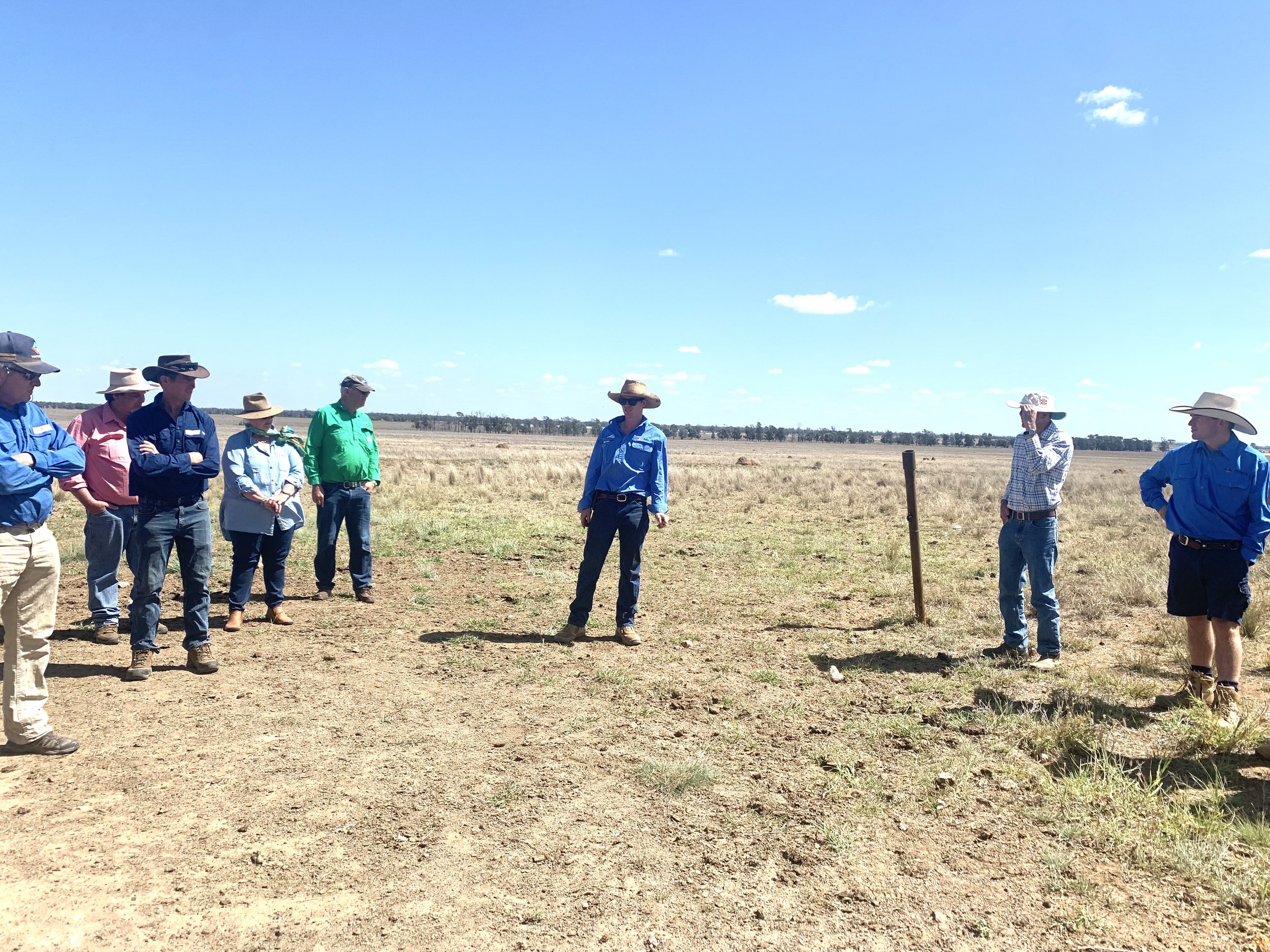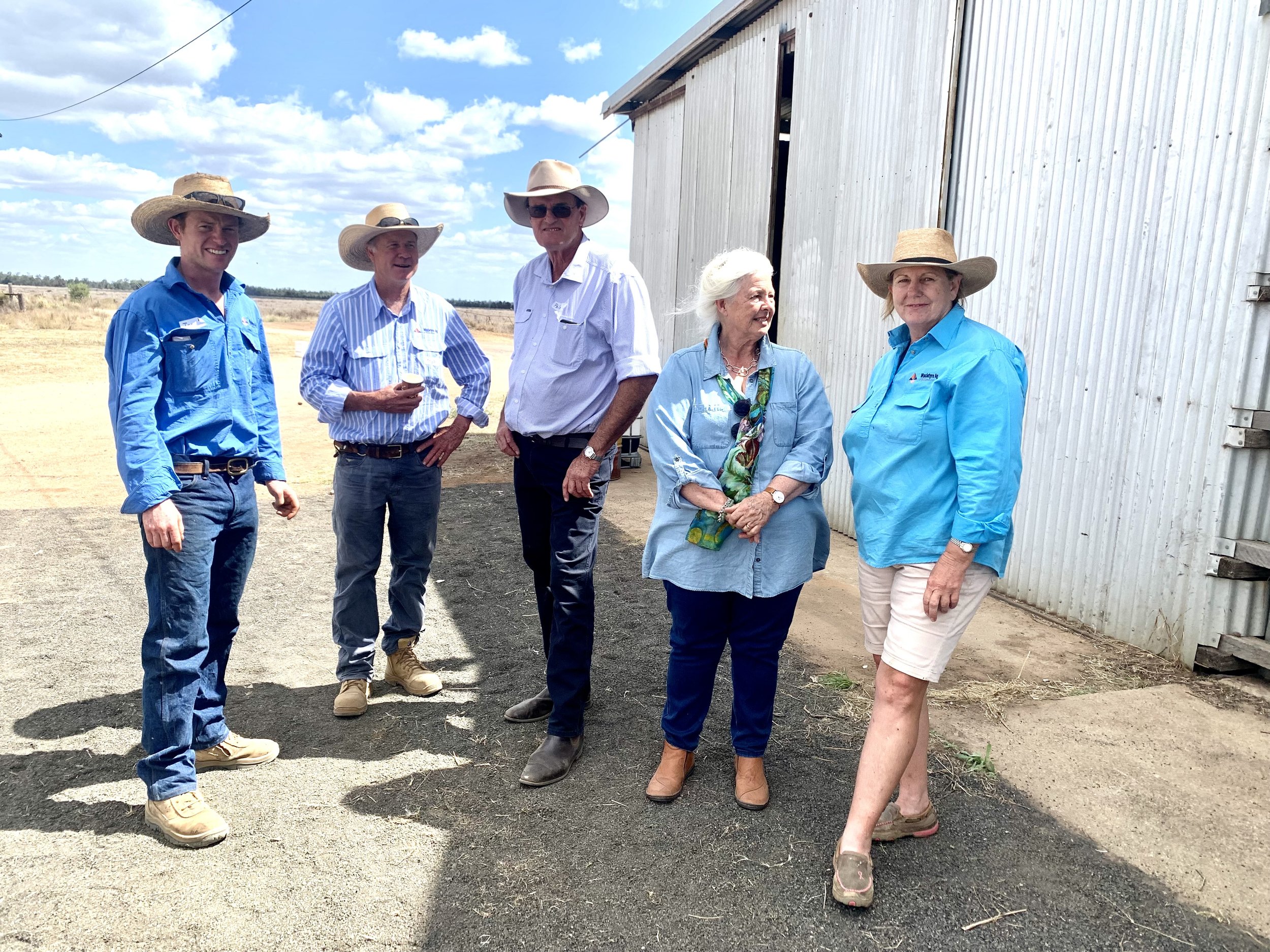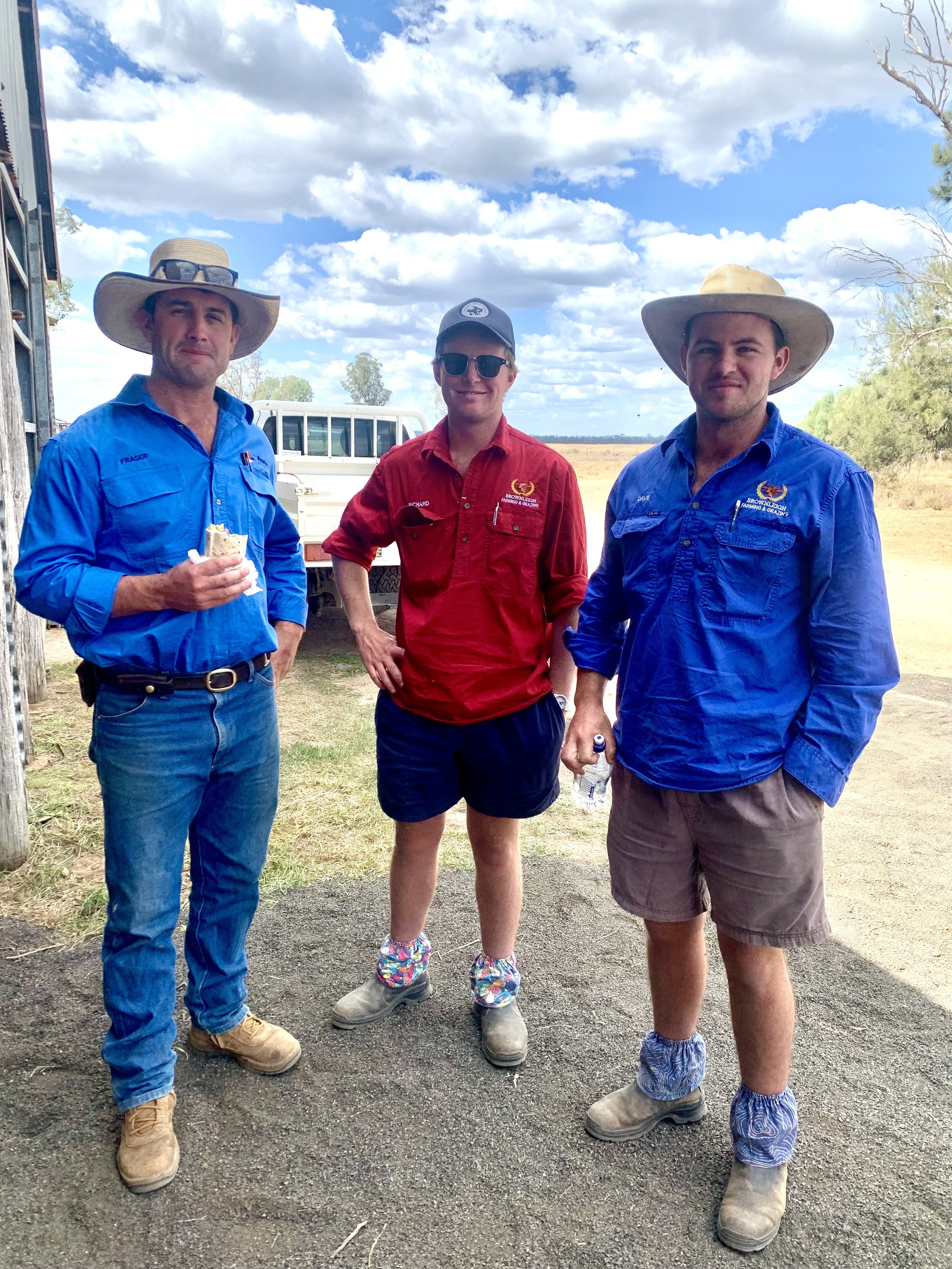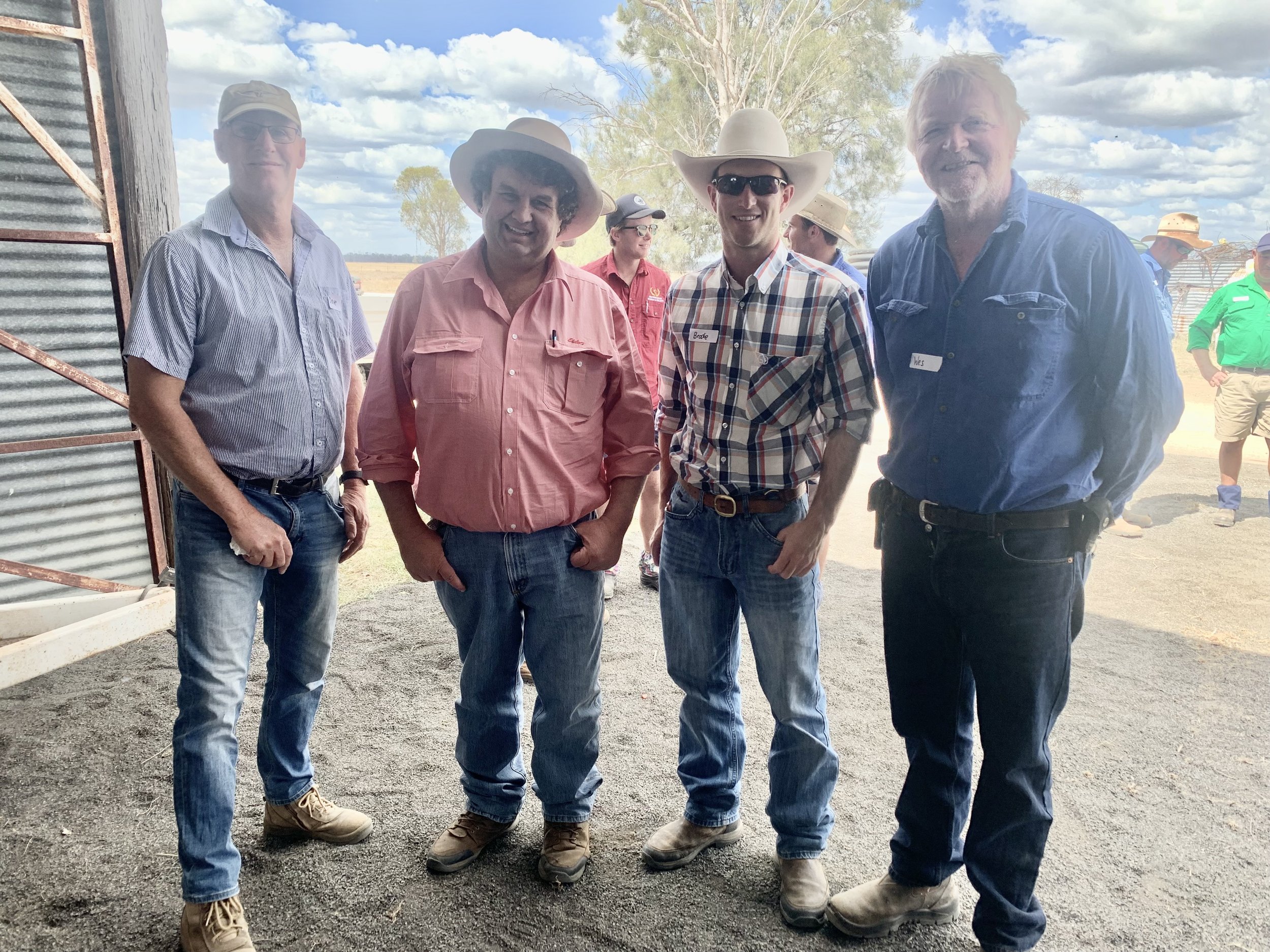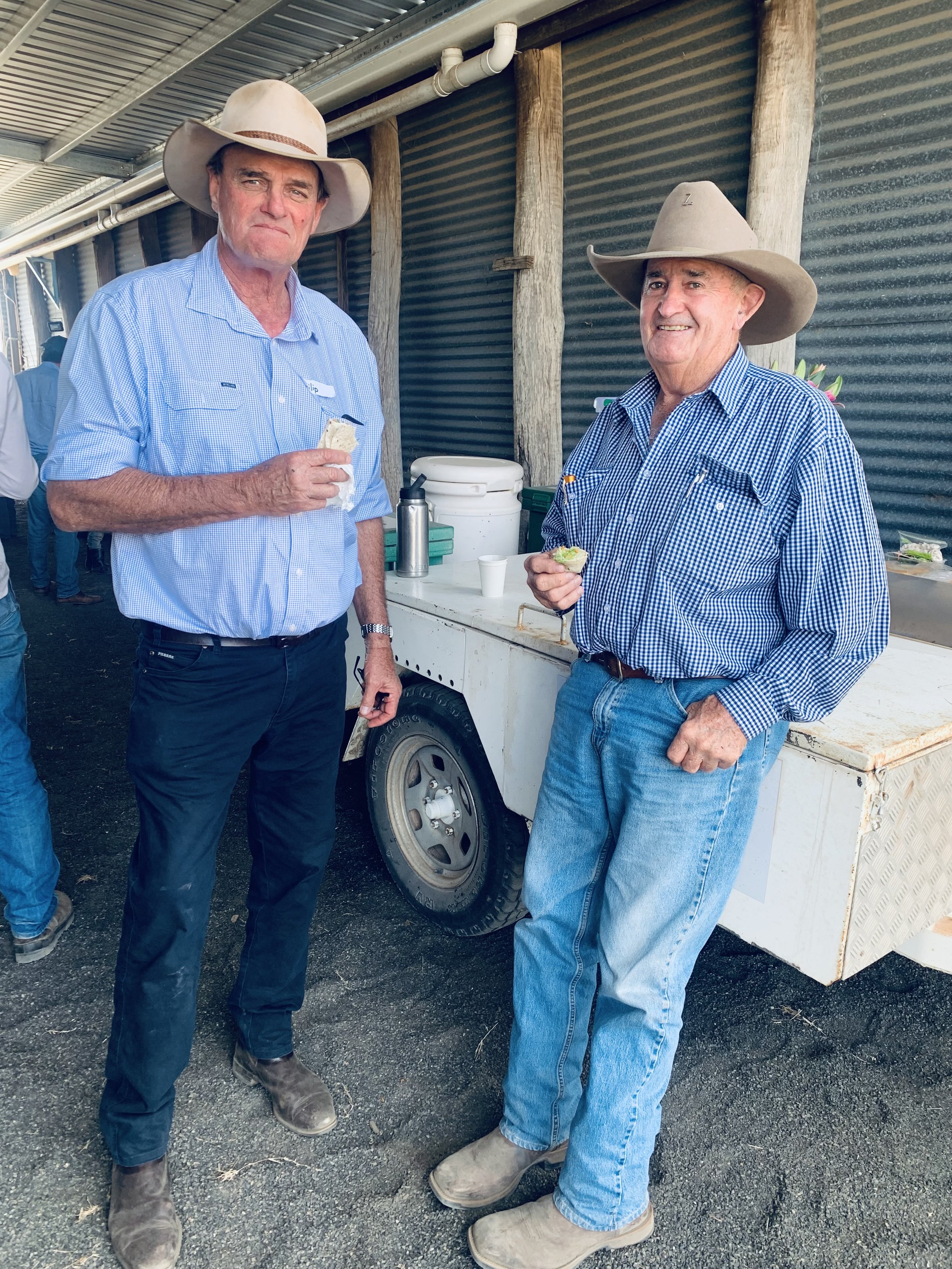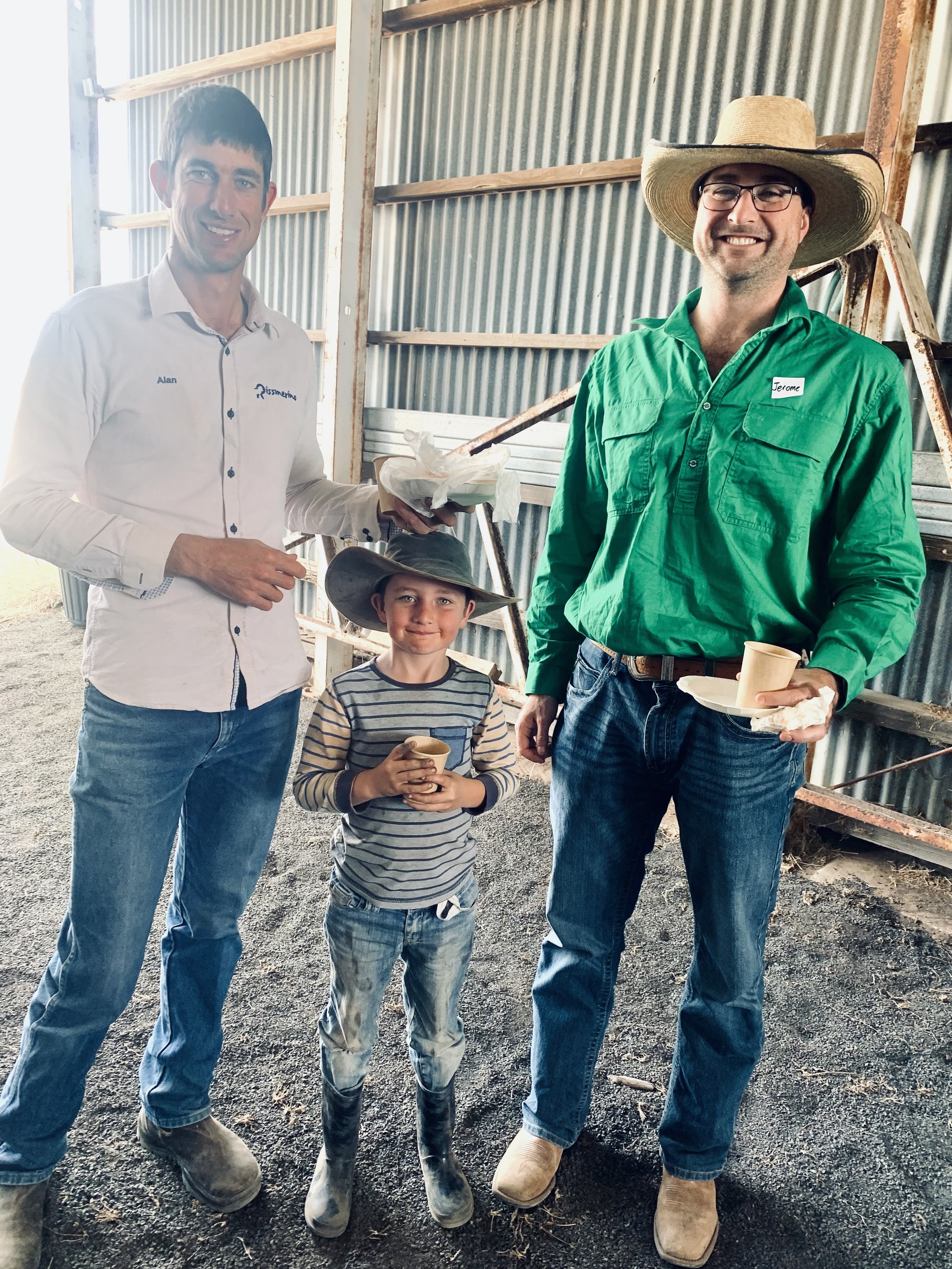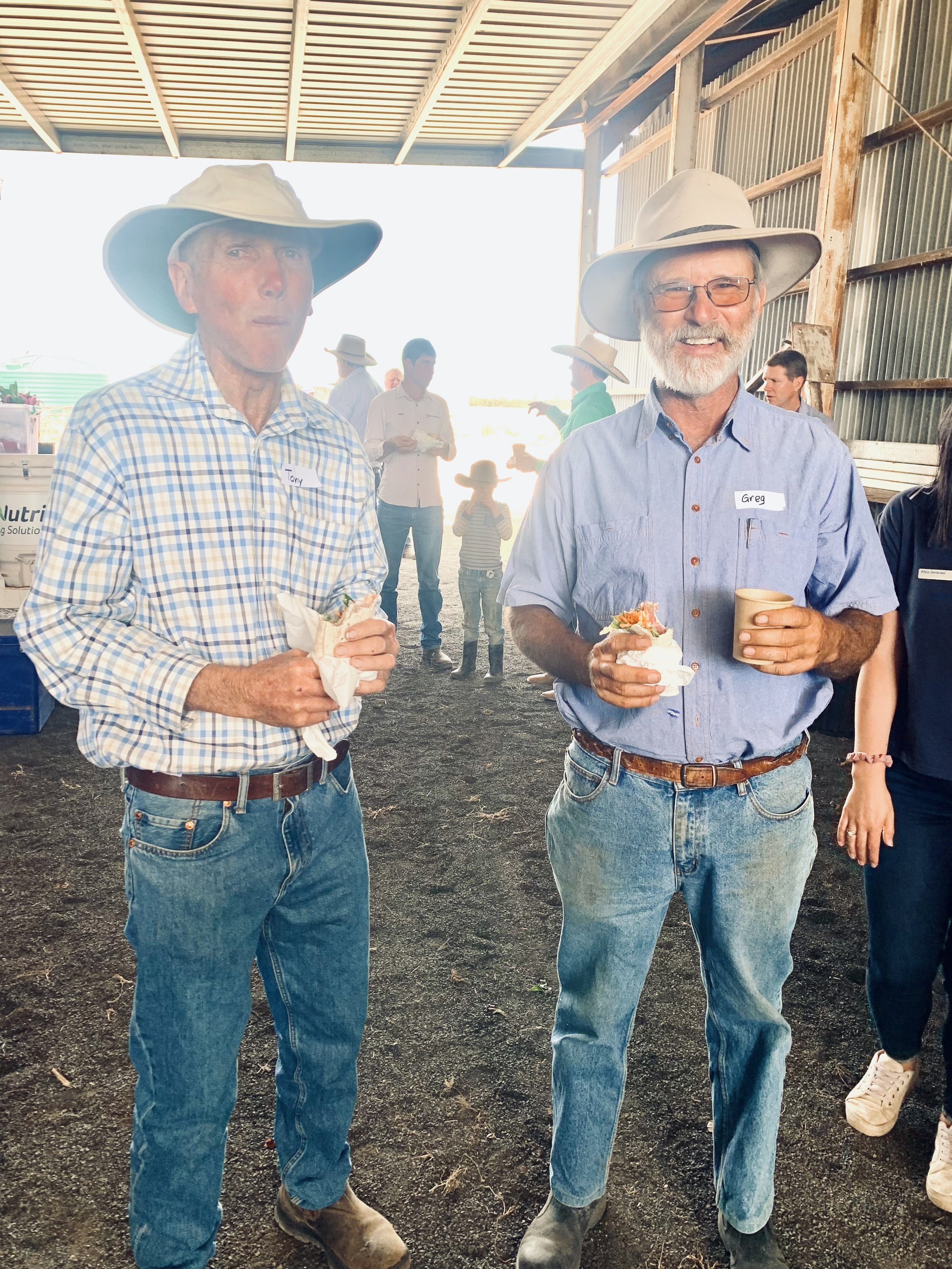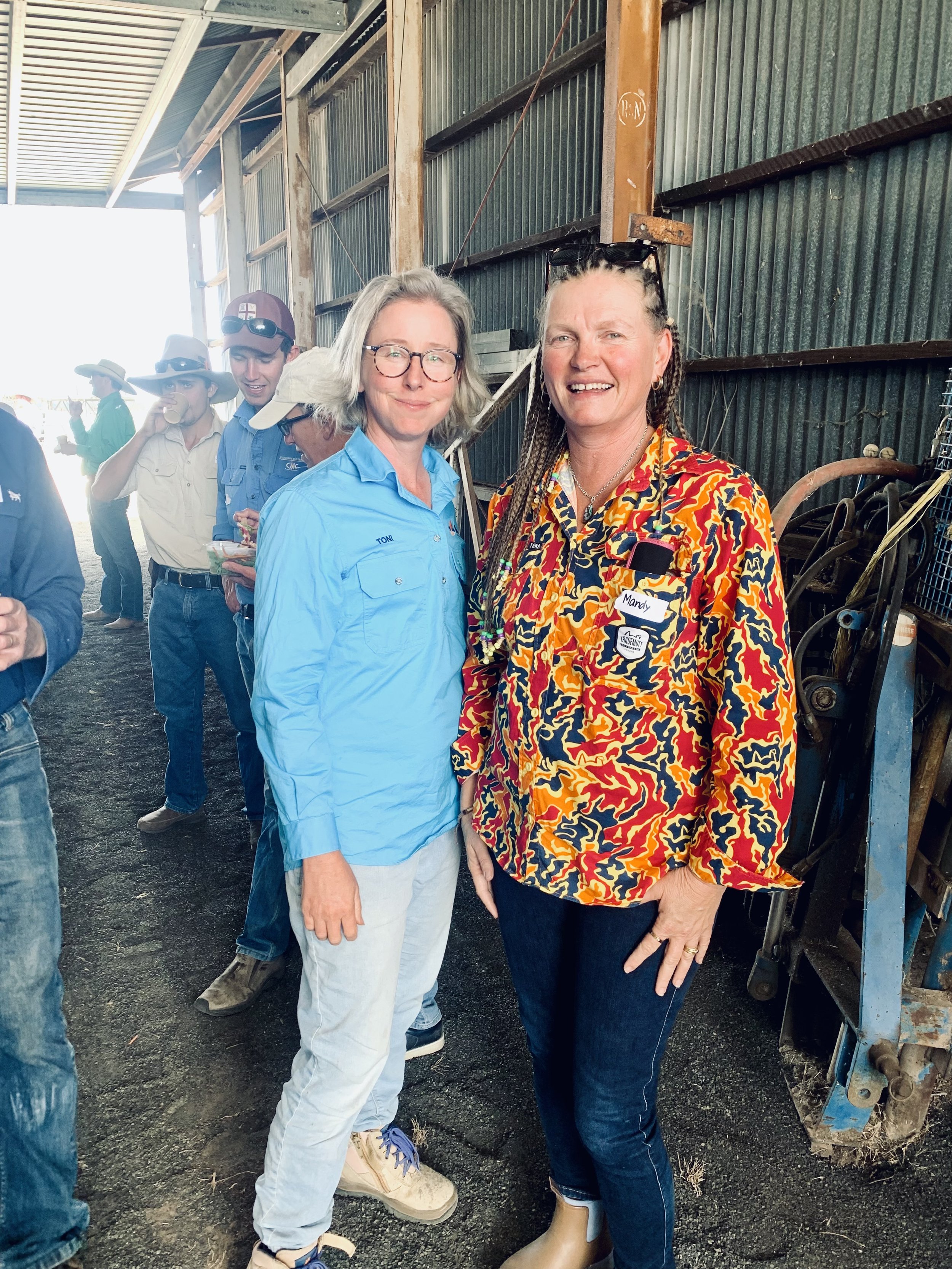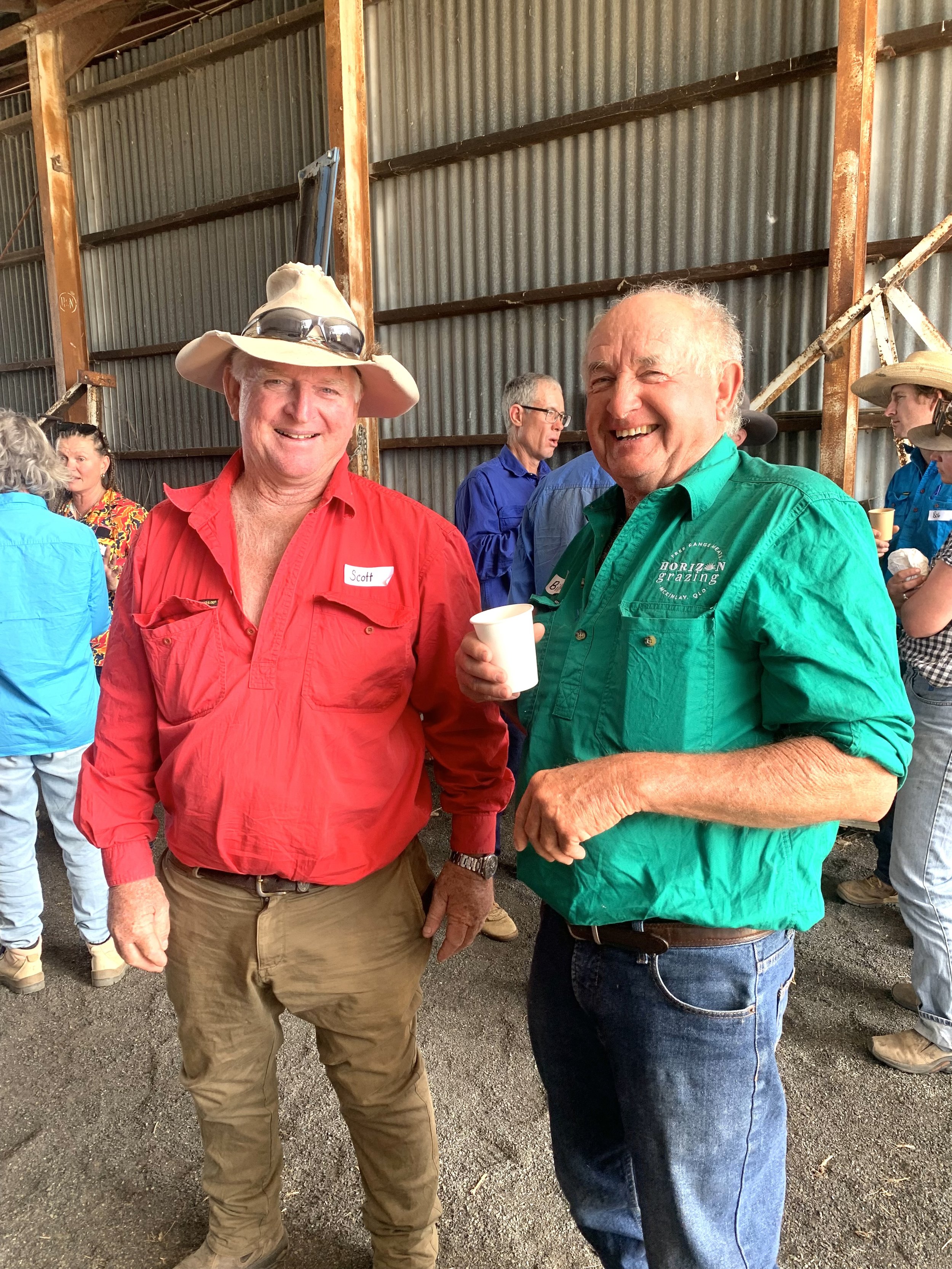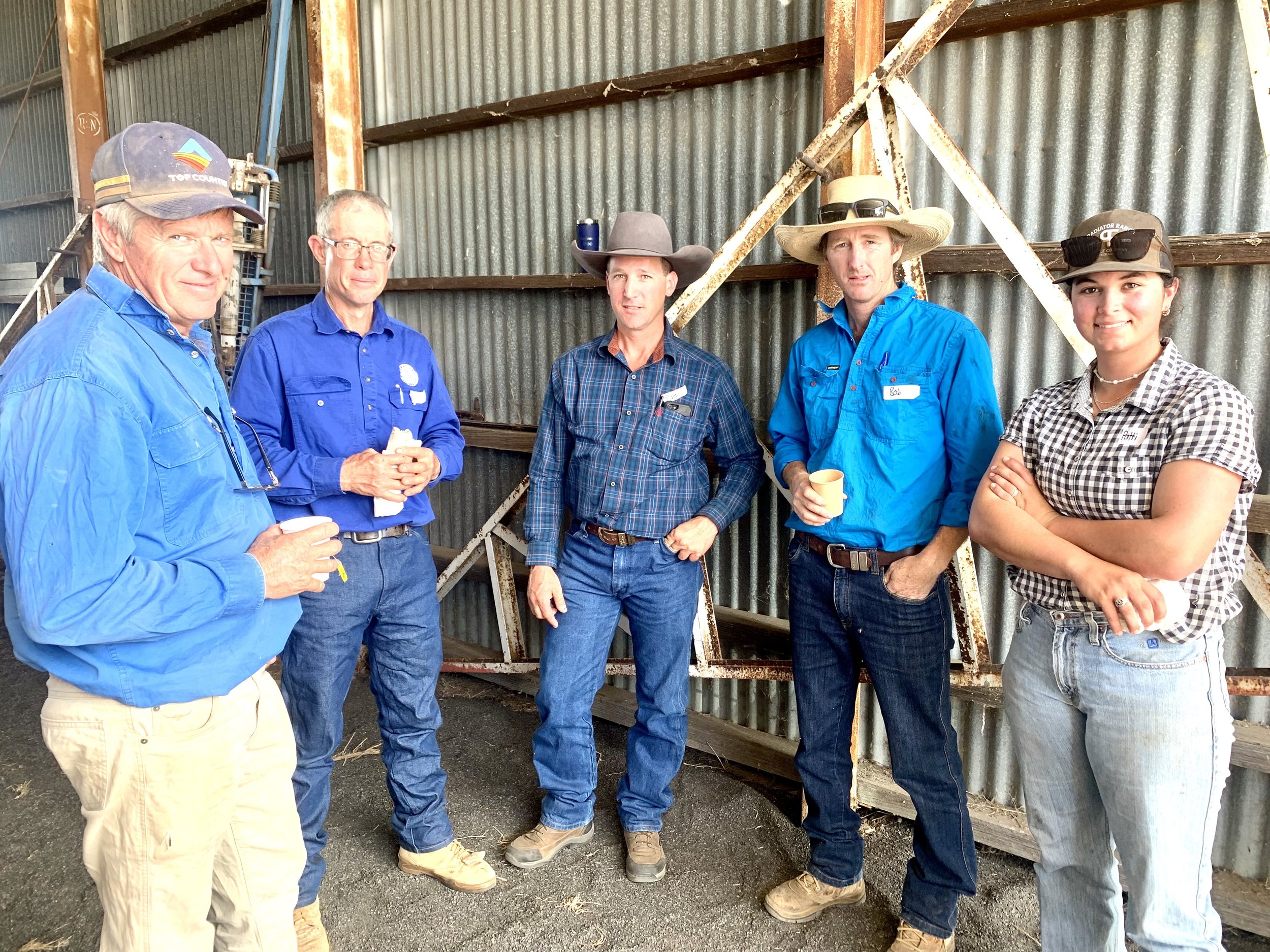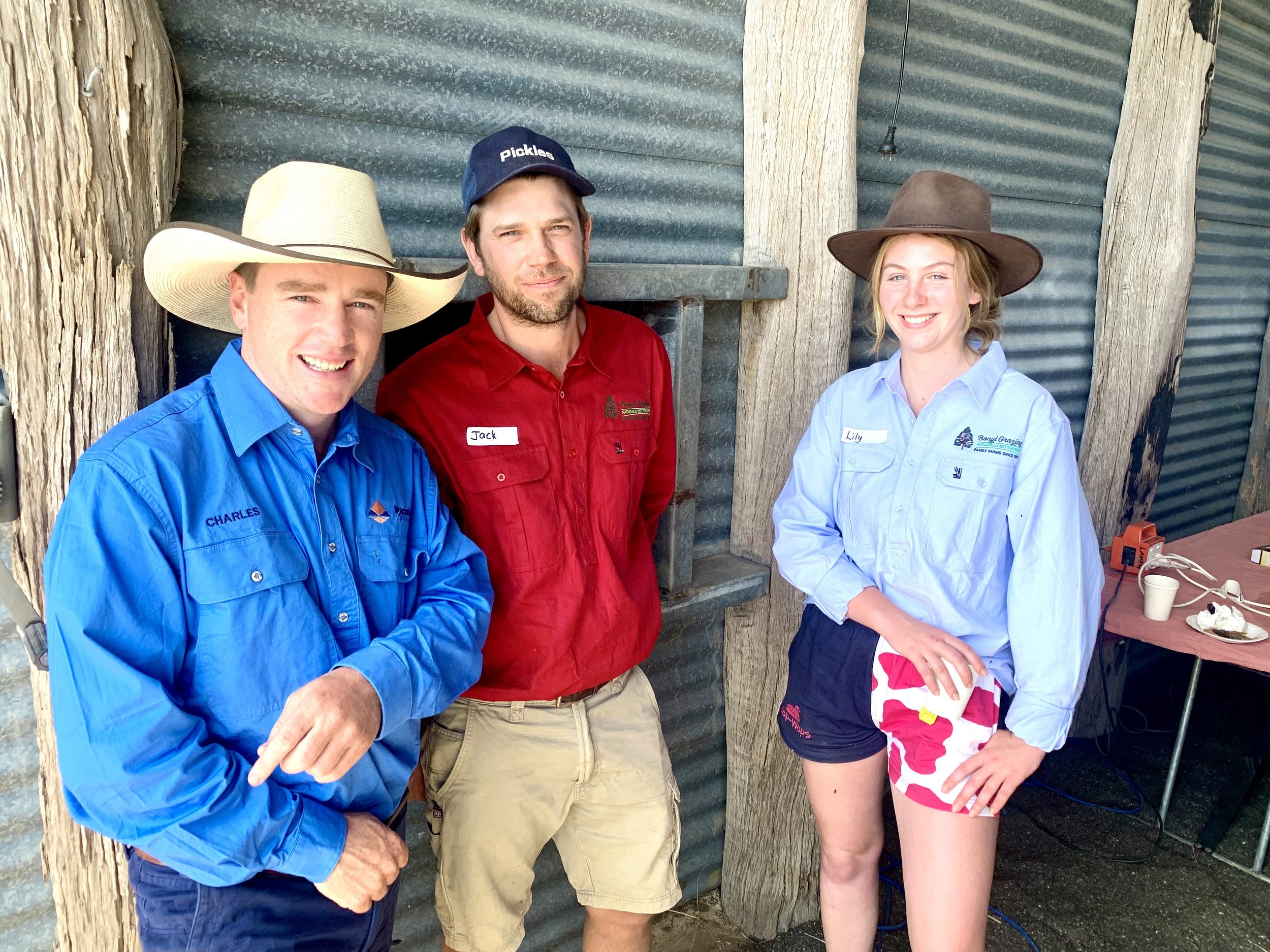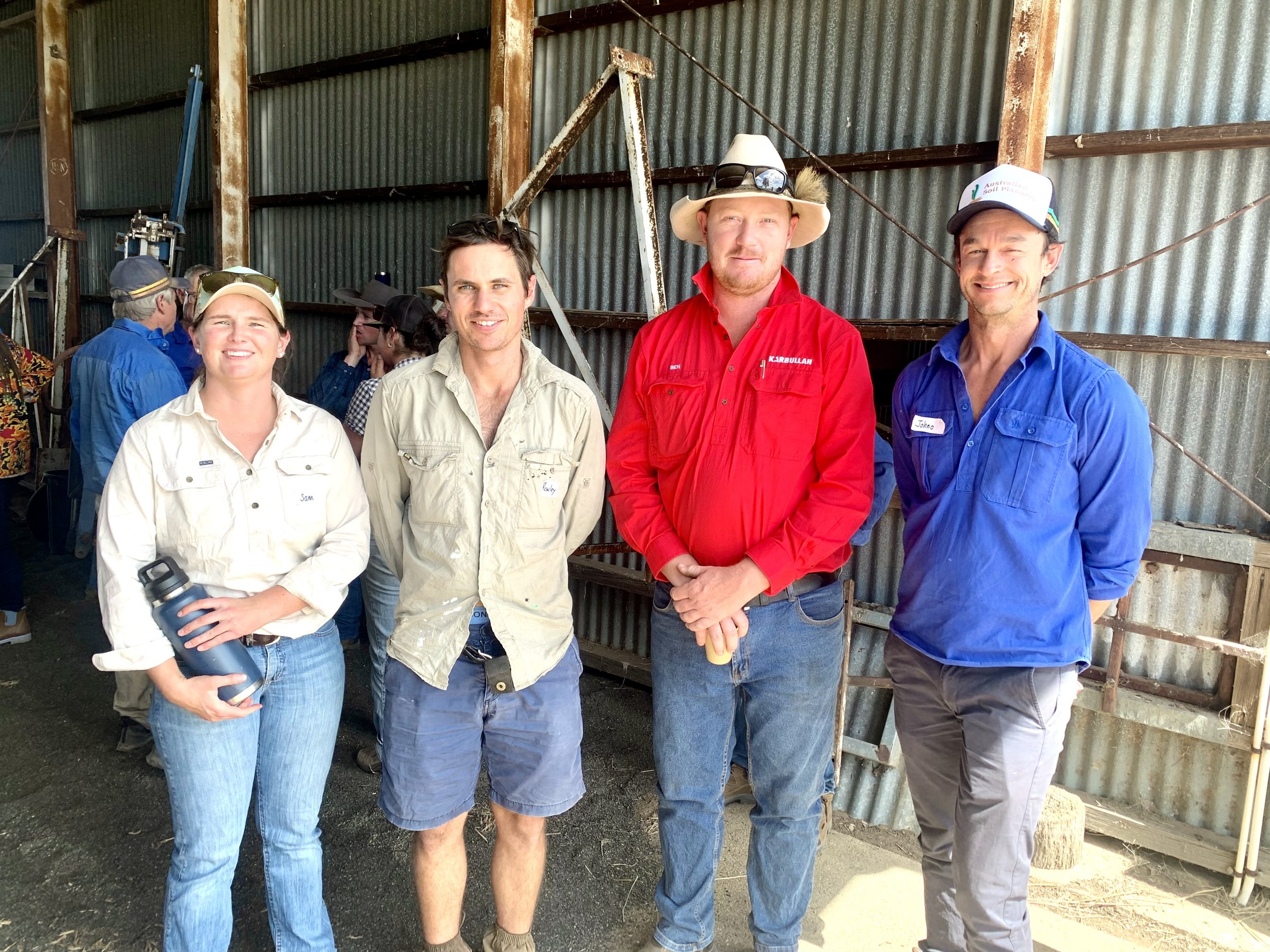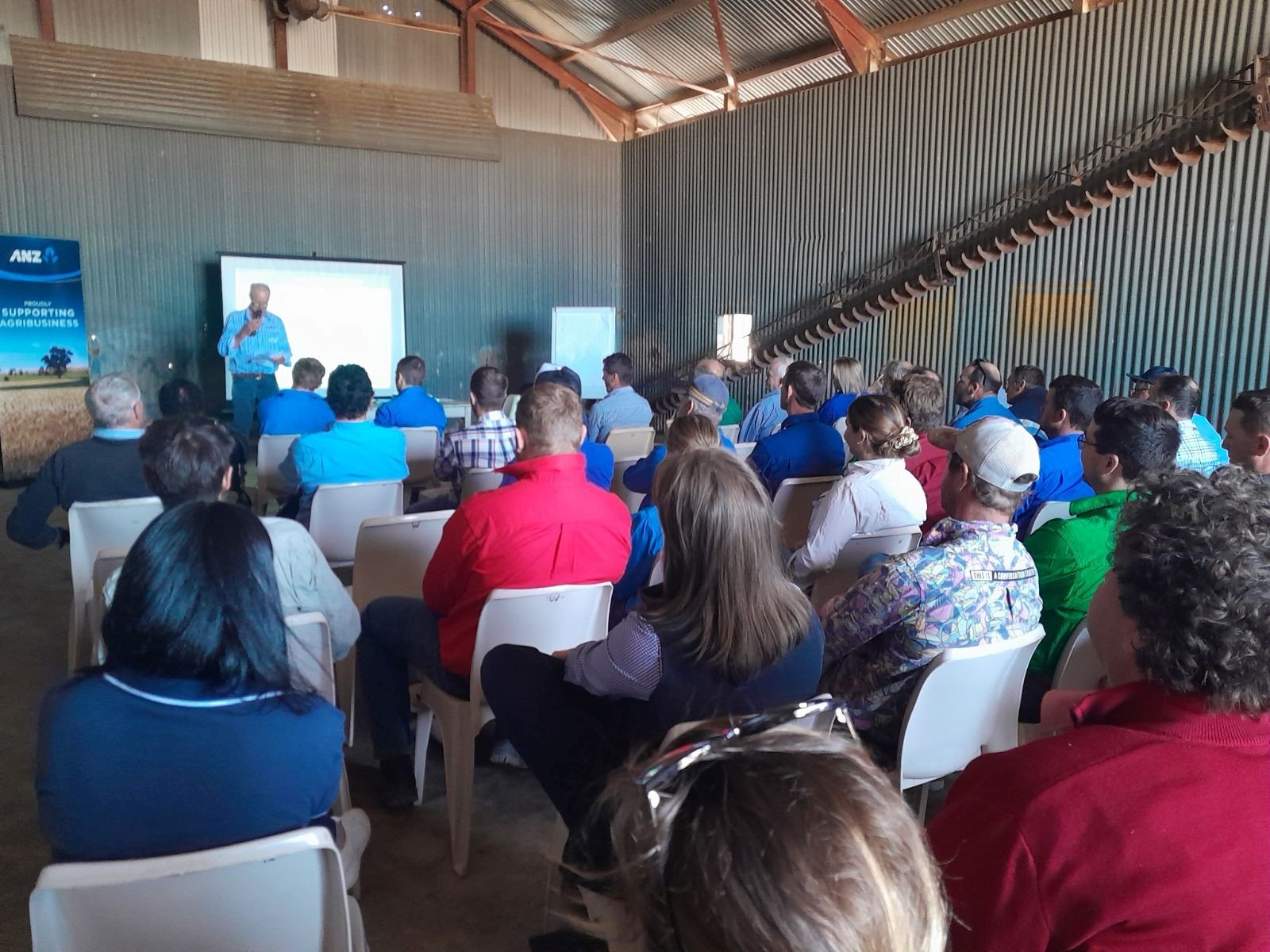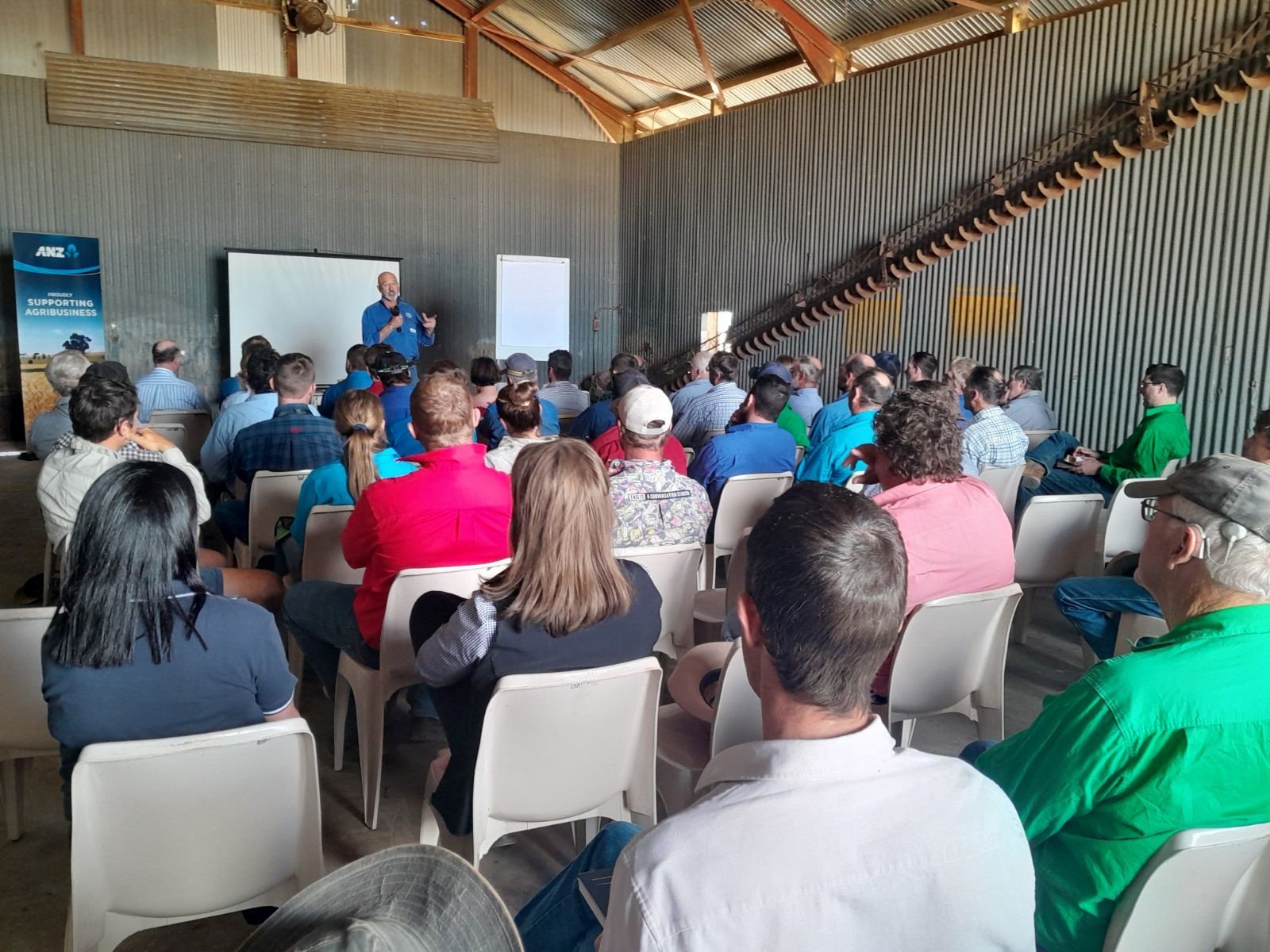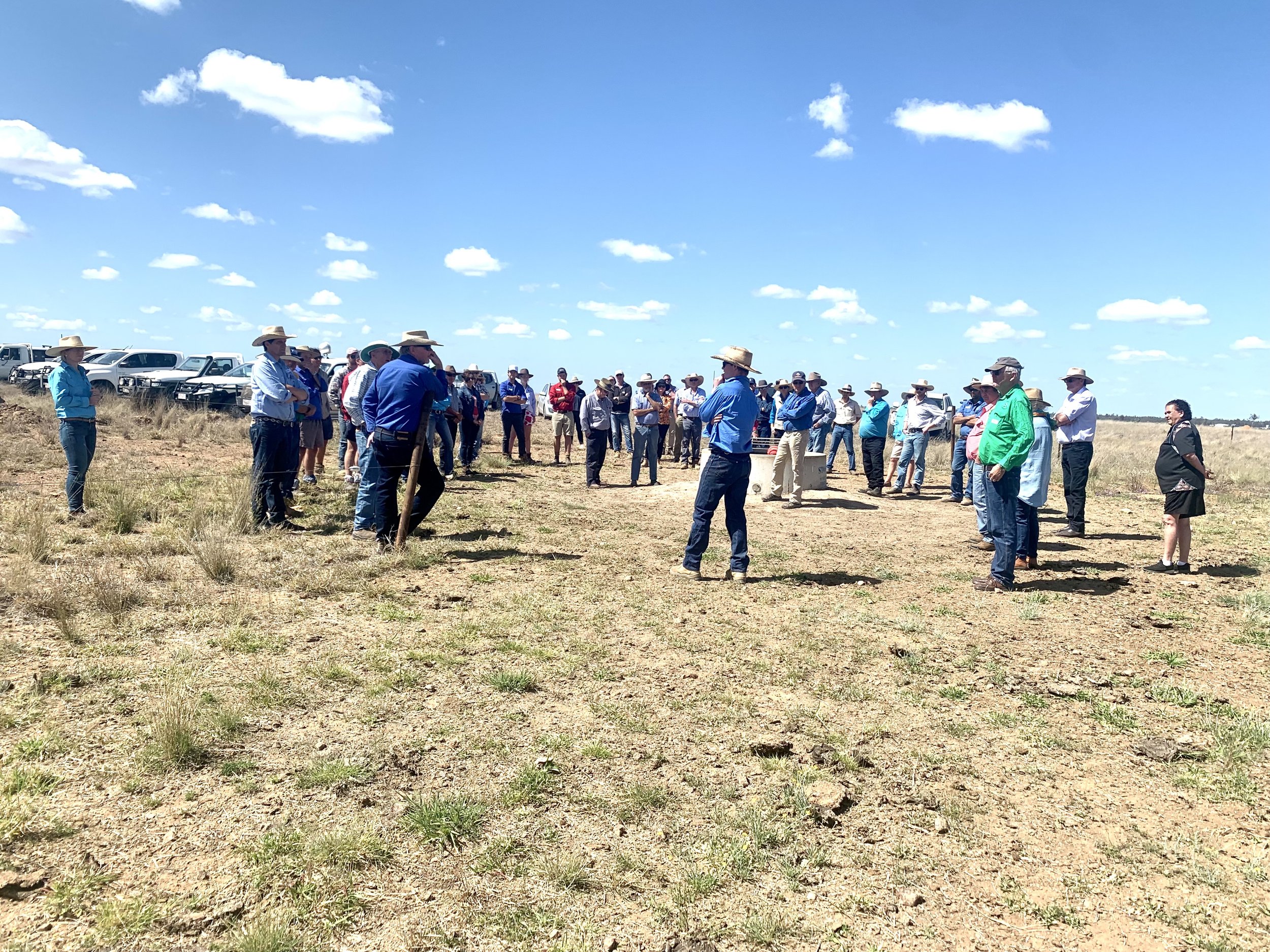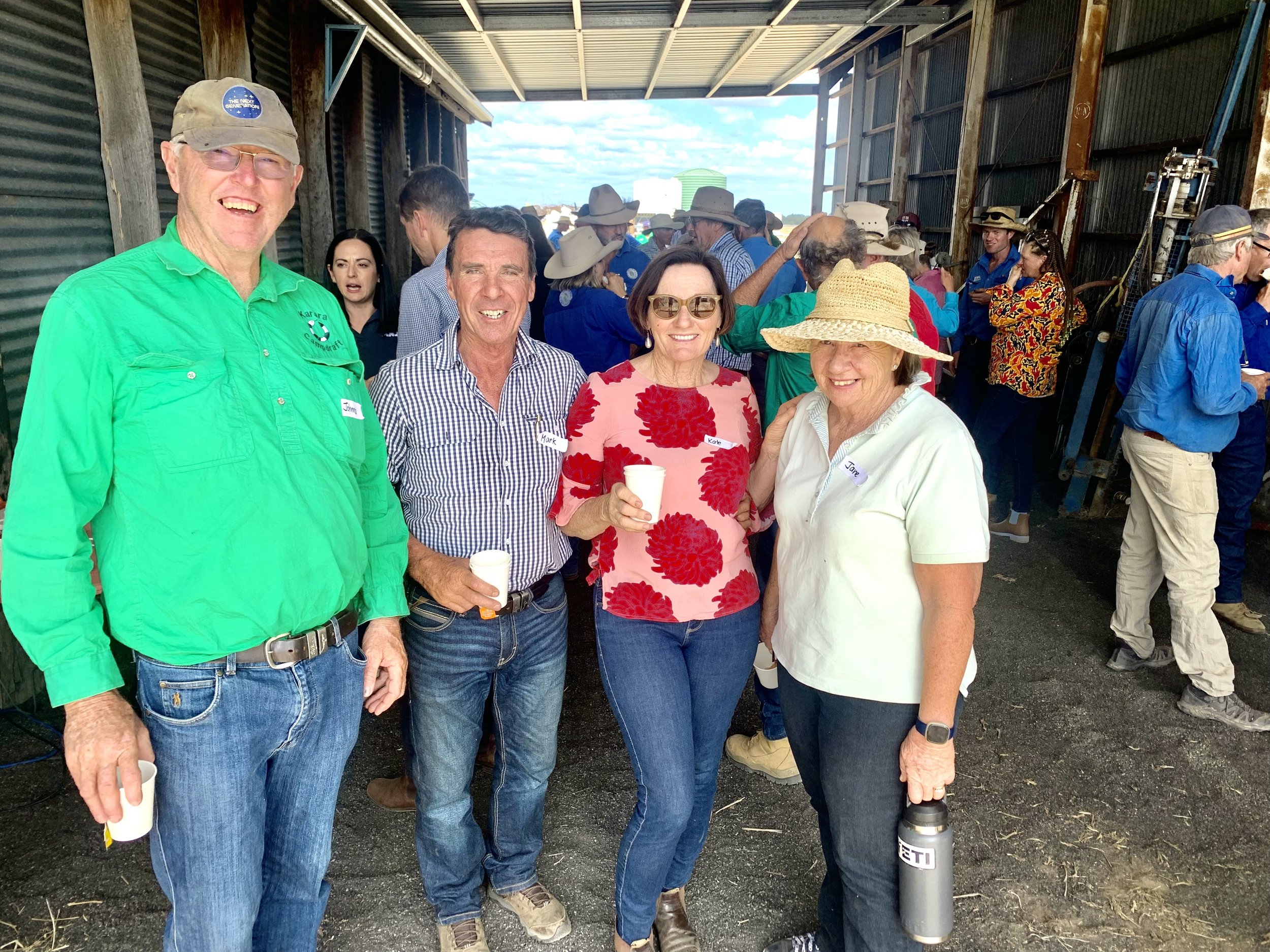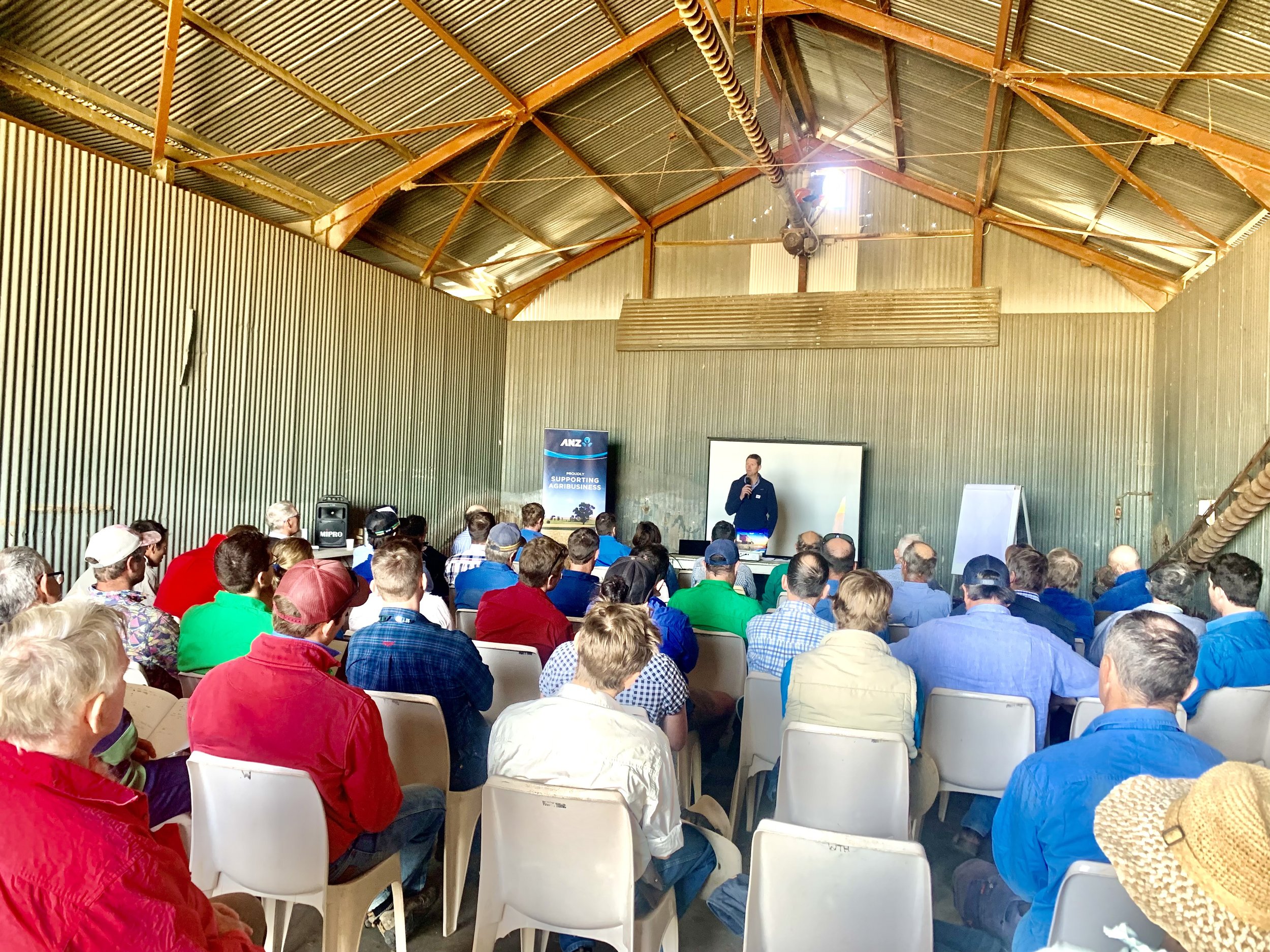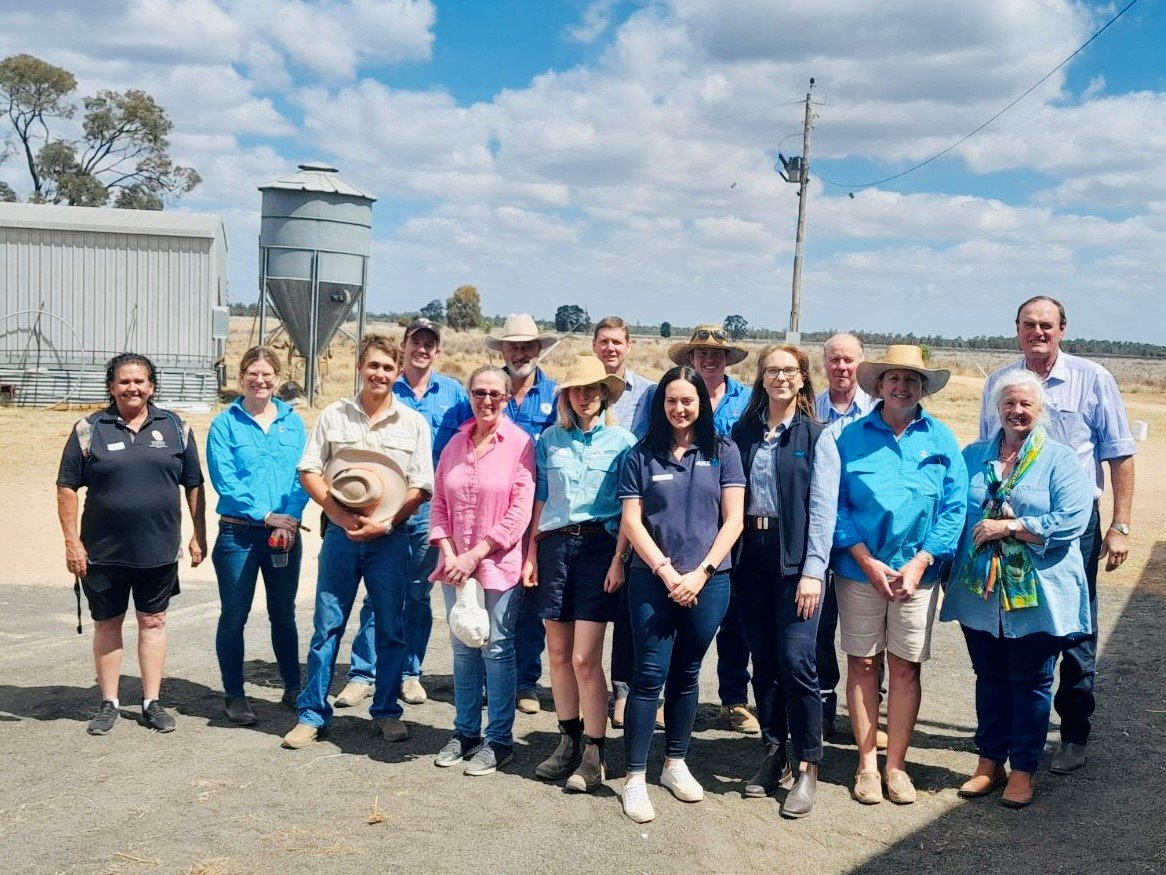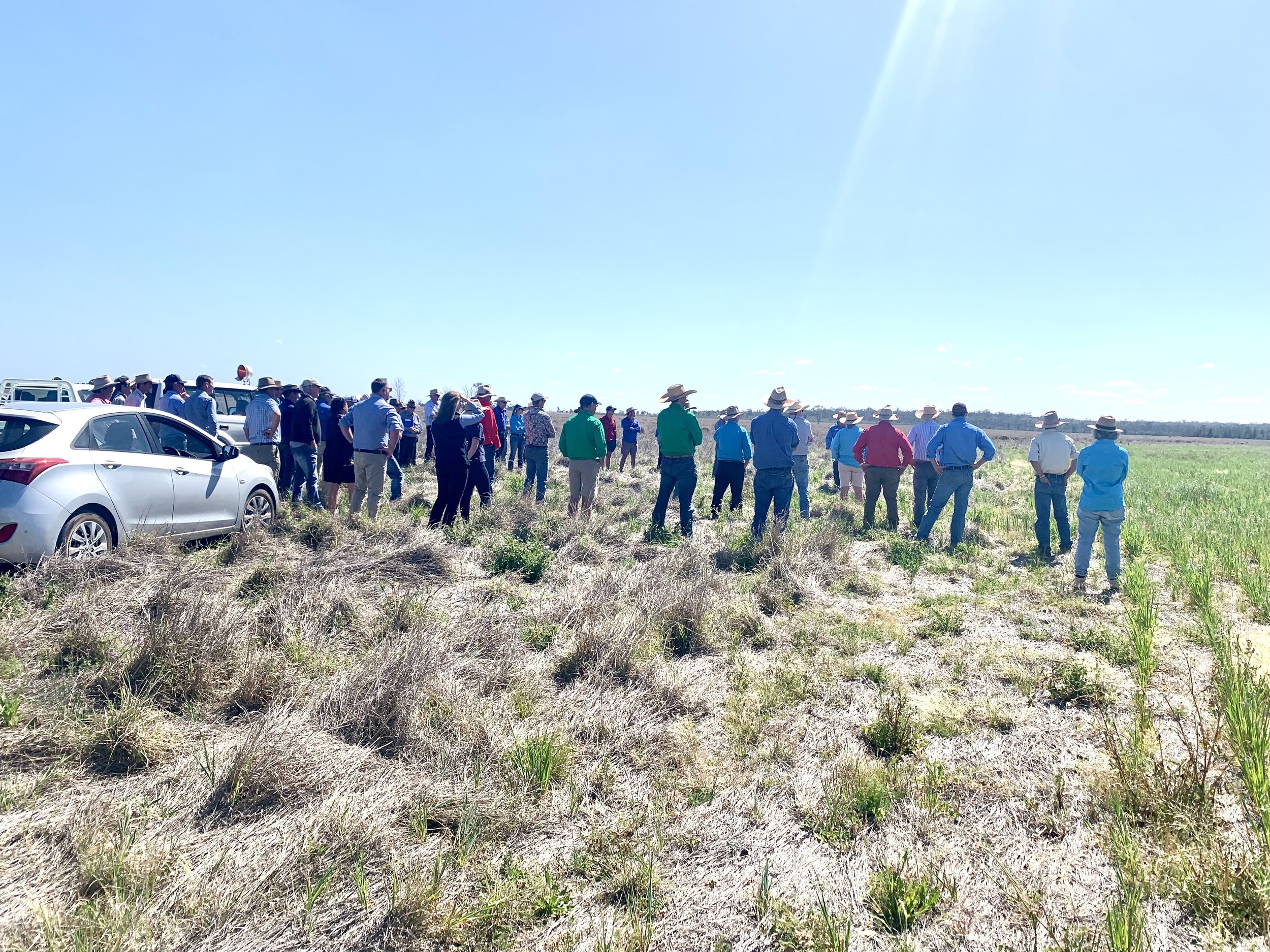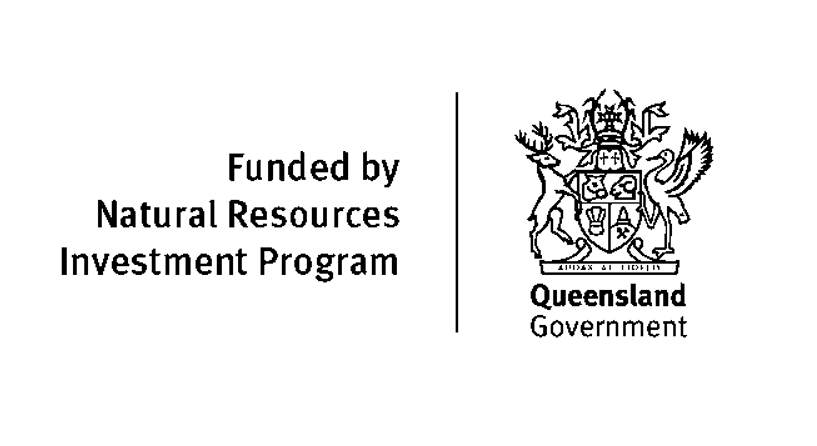Reflections on our Grazing Naturally field day
“If you’ve got grass, put a mouth on it, turn it into dung and urine
and sell the by-products (beef, wool, lamb etc)”
– Dick Richardson
Whether they act on it or not, the majority of graziers know to reduce their stocking rate as grass reduces. Only a small minority understand the importance of increasing their stock rate when grass is getting away from them, and accordingly, the majority of grazing farms are often vastly understocked.
This was one of the key messages from Dick Richardson at Macintyre Ag Alliance’s Grazing Management field day, hosted by the Lahey family at “Tarrawonga”.
Dick is an internationally renowned educator and founder of Nature’s Equity, which provides advice and services around the Grazing Naturally method, an ecological principle-based solution to grazing management designed to improve the production, profitability, soil health and biodiversity of farms.
Not everyone agreed with everything Dick had to say or his grazing approach in general, but more than a few of us present saw Dick’s potentially controversial views as presenting a wonderful opportunity to scrutinize our own practices, and a catalyst for either validating or amending our accepted approaches.
Dick’s messages sometimes vastly differ from other grazing management approaches such as RCS’s and Natural Sequence Farming, but they are based on vast experience with grazing enterprises in many challenging environments in Australia and around the world.
As opposed to rotational grazing, Dick makes the case for ‘rational’ grazing, a pattern of grazing that he says enhances grasses and soil life to build healthy vibrant grasslands and soils that are deep and high in carbon.
One of the problems Dick sees with other grazing management systems is that if we try to make the whole farm right by keeping grass in a certain growth phase, we get nothing right. Having a priority zone means that at least one-seventh of your property is managed correctly.
The aim is to have stock mow the priority paddock down to the height of a golf ball, all the while contributing plenty of all-important dung and urine to feed the soil. The mob is then moved into zone two and beyond, and only brought back to the priority paddock when grass growth reaches the height of a beer can and importantly, there is adequate moisture to go again.
When you first attempt to achieve this, you may need to use follow-on herds, where your most important mob leads the stock movements, for example your cows who need to put on weight for joining, followed by a second mob such as weaners or light steers. When starting this new approach, it may take several 7-14 day grazes using two mobs to bring your priority grass down to the desired height.
In dry seasons, you would employ quicker, lighter grazes, and use more of the lower zoned paddocks first (e.g. zones 4-6) in order to give your priority and near priority paddocks a break to start with before returning to them later in the dry season. During the growing season, your job, among others, is to limit future feed being grazed, which happens by having not enough stock in a paddock and leaving them in there for too long.
The process is similar to maintaining a lawn – you mow it, water it, feed it, mow it again and repeat, and in no time you end up with a lush thick carpet of grass.
According to Dick, grazing the plant heavily won’t hurt the plant, as long as you allow the plants to grow to 4 to 6 leaves in-between grazes. Keeping plants in the early phase of growth drives the flow of liquid carbon into the soil to feed the soil building biological community.
Ideally you want to keep the plant out of its reproductive stage, as this is when the plant uses more water and nutrients. And which plant does an animal prefer to eat? The money is in the young plant. This makes the Grazing Naturally method more profitable as animal performance is better on younger plants.
An interesting part of the day was learning about the evolution of grazing landscapes, and the difference between 'woodland' and 'grassland' ecosystems. Woodland ecosystems are created by mulched leaves which is very acidic and destructive to grassland critters like dung beetles.
In nature, form follows function. The grassland environments we know and work with daily function through digestion of animals resulting in its form, whereas a forest functions through predominantly fungal decomposition of plant material, resulting in its form.
The important thing is that management practices need to be aligned with the system you're working with. According to Dick, if you have grass that’s got away from you and you don’t have enough stock on hand, slashing would NOT be an ideal strategy to deal with the problem, as huge amounts of mulch suppress grass growth (gardeners know this) and create opportunities for woody plants, including box thorn, saffron thistle and trees, to flourish.
If you decide to slash, you could use vegemite (12TBS per hectare diluted in 1000L) to increase microbial activity and quick decomposition of mulch. Raking the mulch into strips would be preferable, or you could consider silage or hay production as a good option.
Overall, it was great to have Dick challenge some of the locally accepted best practices in grazing management and bring some new ideas to the table. Many attendees found it very valuable to be challenged to examine their grazing management in comparison to Dick’s strategies, and open their minds to the potential for improvements in feed conversion and carbon sequestration with the need for little to no infrastructure changes.
You can contact Dick on PH 0429 069 001 or email info@naturesequity.com.au
This project received funding from the Queensland Government's Natural Resources Recovery Program.
